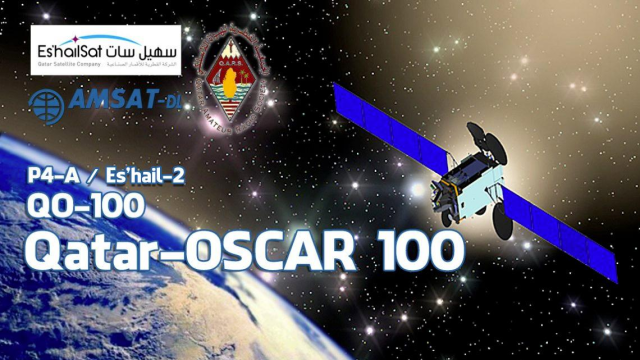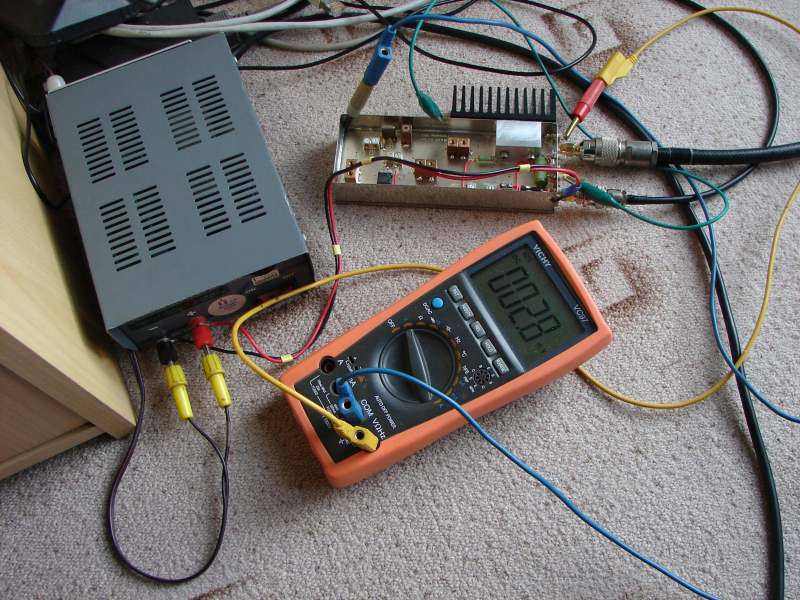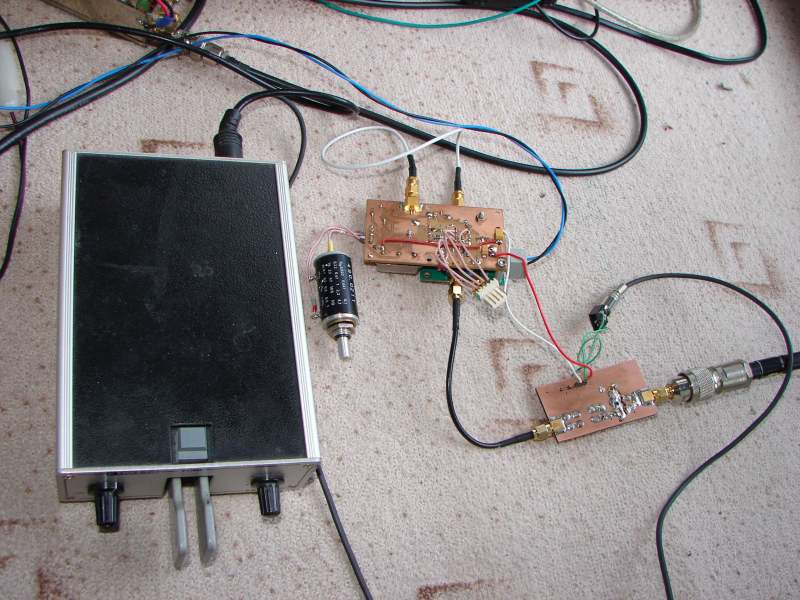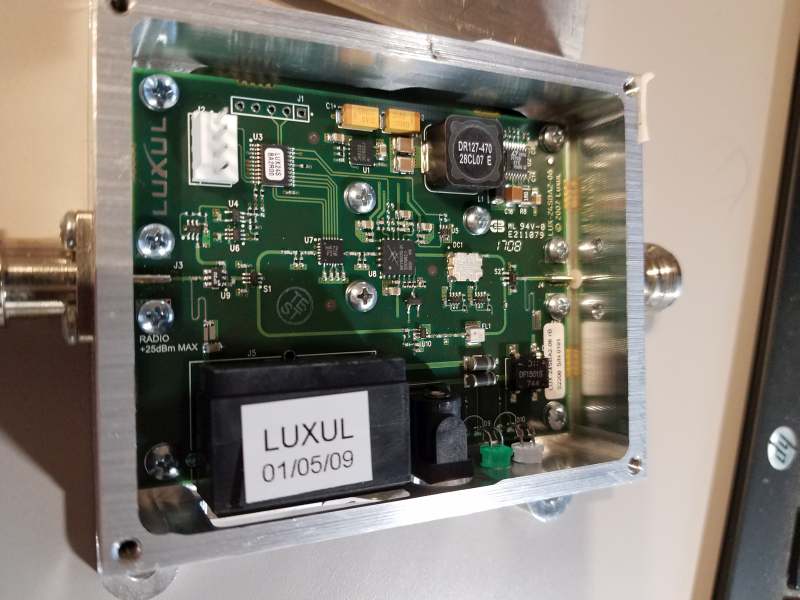QO100 and my activity (last update August 2025)
First few details - QO100 is a new HAM satellite, launched late 2018. The satellite is mostly commercial project, carrying also two HAM linear transponders (commercially built but for HAM frequencies and traffic), with support of German Amsat organisation..
It is something very new, it is first geostationary satellite in HAM history. In the article I concentrate to NB (narrow band) transponder only.
Uplink frequency is around 2400 MHz (circular polarisation), the downlink is around 10489 GHz with linear polarisation. More details are at Amsat DL QO100 page


So communication over it has some aspects that distinguishes it from other HAM satellites (currently all other
HAM satellites are low earth orbit satellites).
The satellite has a large footprint, that allows communication with stations from PY, whole Africa and Europe, then over middle east to VU, HS... Unfortunately two spots with high
activity (USA and Japan) are not in range.
The footprint is not moving. So once the satellite is above the horizon at given place, it is available round a clock.
The satellite is on fixed point on the sky, so the antenna can be fix mounted. No rotator necessary.
Because the distance between satellite and earth station is constant, there is no Doppler effect. So the received frequency is always in fixed ratio to transmitted, no compensation necessary.
If you have suffciently stable radio, the TX frequency can be calculated and always matches. Addidtionally the path losses change very little, so once you adjust to correct TX power level you
can use it later on.
The satellite is far away - about 30 000 km, resulting is noticable signal delay (around 0.2 sec, signal travels 2x30 Mm). It is not possible to use the downlink signal for CW sidetone,
you must always use sidetone generator.
The transponder is very sensitive, you don't need a high power TX amplifiers, the technology allowing required power (around 1 to 10W) is now widely available. High gain antenna can be easily
built at home (TV offset dish with home made feed).
QRP traffic is also possible, with good antenna it is possible to communicate with transmitter power 100 mW or less.
The receiving equipment can be also very simple. Standard TV offset dish with standard TV satellite LNB is sufficient (the LNB usualy works well also slightly out of band). With standard 9.75 GHz LO
the IF frequency is around 740 MHz, wich can be easily received with cheap RTL SDR receiver.
If you don't want to build a receiver, you can use one of widely available web receivers, like at Goonhilly CES. It is the best starting point for experiments.
When you consider TV transmiting as fun, you can enjoy the wide band transponder. I admire those who
prepared that own TV station, interesting from technical point of view. But I personally prefer CW QSO...
As result once your station is working, you don't need need to care about other problems related to satellite communication, it works like standard linear repeater, just with some signal latency. The
traffic is then more like as at standard FM repeater (just with very large coverage), it looses characteristics of DX operation. It is available round a clock, so it is sometimes difficult to
catch the required station - the probability both stations are QRV at the same moment is low. Better to arrange skeds :-)
Equipment I use
I started just about 2 weeks after opening of the satellite for public traffic. I had some equipment I used with AO40 satellite before: 80cm offset dish antenna with homebrew 5 turn helix feed.

and 144 to 2400 MHz transvertor (home built around year 2000 from DB6NT kit), driven by FT817, giving about 500 mW.

Both old, but in working order. I layed the antenna to the balcony
and started receiving using web RX. After some time while transmitting and moving the antenna I was able to identify my signal in spectrum. It was not very strong, about 20 dB bellow beacon signal, but sufficient to carry out
first SSB QSO with IK8XLD. My signal was strong enough for CW, but for SSB it was on the border. Because the antenna was not fixed,
it moved time time in windy WX, so I often lost the signal and had to rearrange it again :-) So the next step was to prepare antenna holder - a vertical pipe able to carry two dishes. Later on I added a second dish for reception
(the 3rd dish at top is used for satellite TV). The frequency stability of original DB6NT transvertor is not the best (just Xtal without any thermostat), so I needed to compensate the drift - retune relatively often. So I use it rarely,
I gave up SSB and concetrate to CW (I never tried transmit digi modes via QO100 and no intention to do so).

Another toy to play with is a small homebrew 2.4 GHz CW only transmitter, called Vrsicek 2. It is built around Analog Devices synthetiser ADF4351 (I used module bought on eBay from China), controlled by AVR chip with my firmware.
The clock for synthetiser come from 32 MHz TCXO. The tuning range if TCXO (multiturn potentiometer used for tuning) is sufficient to cover CW subband of QO100. The signal is amplified by homebrew 500 mW PA using RF2126 chip.
Quite enough power to perform a CW QSO... The picture shows first steps, the complete TX is described in separate article.

I play also with Luxul amplifier. It is designed to be an amplifier for 2.4 GHz WiFi LAN, giving 1W out and handling both RX and TX path. It is available 2nd hand cheap on eBay. The output power is around 1W which is enough for
normal CW and SSB operation.
It's worth to describe ALC functionality of the amplifier. It is designed for WiFi, that means the linearity is important parameter
(distortion can strongly affect the error rate). The amplifier must be also able to adapt to exciter level in wide range. The solution
of these 2 reqirements is: the microprocessor in amplifier evaluates the signal level during one continuous transmission, but doesn't
regulate till end of the transmission. But as soon as the exciter signal is dropped, it regulates the gain using digital step
attenuator. When the amplifier is powered, the attenuator is set to maximum attenuation, and later the gain is increased every
transmission, till the moment the ALC level is correct. It is fine for both CW and SSB, but not if you want to measure the PA
gain using signal generator (continuous carrier). I was surprised how low the initial gain was... But later on when I tried to
switch generator signal on and off several times, the gain gradually increased!

I have also purchased a 20W amplifier from SG Laboratory. The amplifier does
what I expect, nice simple design. Gives enough power to excite the NB sat with my antenna up to highest acceptable level
(and even more). You need just to mount it to heat sink and ready. Anyway, I don't use it too often - for my CW
operation such high power is not necessary, and I am QRV on SSB rarely. Here's the manual.
I have tested also reception. First experiment was with standard LNB and RTL receiver (I had to insert about 20 dB attenuator between LNB and RTL, signal from LNB is too strong). I was able to copy CW beacon just without
any dish, with LNB just pointed to QO100! Another interesting point was I discovered the signal is not comming through the glas on balcony door... When I put the LNB to dish, the signal was nicely strong, I was copying
the transponder noise as well. The only disadvantage was poor frequency stability of LNB. The drift was about 50 kHz after switching on. Of course, now there is a solution for that using locking on beacon frequency, but...
Later on my wife complained we have too many disdhes on the balcony, so I removed the RX dish and use again just the Web RX.
QO100 traffic
Actually I am not very often on this satellite, but when, with my QRP CW transmitter only. It gives me more fun than SSB or FT8, I don't need a strong signal. I don't collect DXCC or stations, I just enjoy
good CW operation and a chat with the other station.
Some my personal feelings, don't take it too seriously. I am primarily CW operator, I like QRQ CW, DXing, contesting etc. I do minimum QSO on SSB, instead of that I play with digital modes. Acording to that I concentrated
on CW activity on QO100. Unfortunately it is low... I understand the people active on microwaves are usually not members of HSC (high speed club), the satellites allow easy operation on SSB so there is no reason to go to
CW or FT8 in order to make a QSO with extremely weak signals both results in low CW activity. I am little bit sad about that. The SSB traffic is also partialy separated by languages, not all operators are willing to make english
QSO. Anyway, it is possible to work many interesting stations there that could be rated as rare DX on HF as well.
ARRL accepts QSO over QO100 to DXCC (Lotw gives points for Satellite award). I spent many years on satellites and managed over 70 DXCC worked. Unfortunately in era of LEO satellites it was not possible for me to reach 100 goal.
By using QO100 I could do that easily, with minimum effort. I feel it is little bit unfair, it devaluate the effort from the past. So I don't count the QSO's over QO100 into my satellite country list. I enjoy QSO with rare station,
but I don't request a QSL or another confirmation. As I said above, I consider QO100 to be a repeater with wide coverage where the DX is "cheap" (in view what you need to invest - time, skill,..).
The QO100 is perfect for people willing to experiment with different radio equipment - you can meet colleagues experimenting in similar field there and share the experience. It is also perfect for long chats with fellows - signal is strong, stable
and with minimum interference. The 300 kHz wide channel can accomodate several times more stations than are active today, it is like a new HAM band.
But from other point of view - it is like another cell phone. You can talk to anyone who is in range and who has the radio switched
on, 24 hours a day. You don't need to care about propagation, antenna direction adjustment, no QSB and QRN, little QRM... Still interested?






